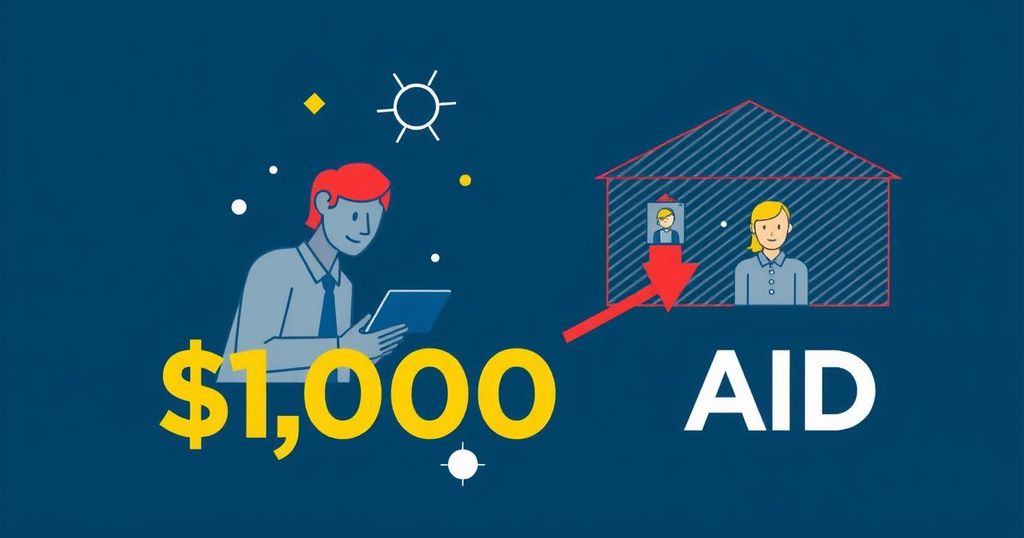GiveDirectly is providing nearly 1,000 storm-affected households in North Carolina and Florida with $1,000 in direct cash payments using a Google-developed AI tool to identify areas of high poverty and damage. Beneficiaries can enroll via a smartphone app, which simplifies the aid process and allows recipients to determine their own needs. This represents a novel approach to disaster relief.
In response to the devastation caused by Hurricanes Helene and Milton, the nonprofit organization GiveDirectly is set to provide direct cash payments of $1,000 to nearly 1,000 households in North Carolina and Florida this week. This initiative employs a unique approach in disaster philanthropy: using an artificial intelligence tool developed by Google to identify areas most affected by both poverty and storm damage. By utilizing a smartphone app designed to assist with government benefit management, GiveDirectly aims to simplify the enrollment process for affected households, allowing them to receive funds directly onto a debit card linked to the app. Laura Keen, a senior program manager at GiveDirectly, emphasized the importance of delivering assistance in a manner that is “streamlined and dignified,” enabling beneficiaries to determine their own urgent needs rather than relying solely on in-kind donations, which may not address every individual circumstance. The use of cash assistance as a disaster relief model is not new to GiveDirectly. The organization applied this model following Hurricane Harvey in Texas and Hurricane Maria in Puerto Rico in 2017. However, the latest effort promises significantly faster results, leveraging machine learning tools to expedite the identification of qualifying areas and facilitate remote enrollment through the Propel app. Although this innovative approach aims to deliver support quickly, it has notable limitations. The focus on areas with visible damage may overlook low-income households that suffered undetected losses. Moreover, beneficiaries without smartphones may be excluded from the program, even as GiveDirectly raises funds to sustain their operations. Despite the challenges, the organization remains optimistic that its model can inspire similar initiatives within disaster relief frameworks, especially as the Federal Emergency Management Agency (FEMA) adjusts its own cash relief operations. Overall, the value of directly transferring funds to those affected has been underscored by various studies and past programs, revealing that recipients effectively utilize the funds for essential needs. Keen expressed a desire for GiveDirectly to explore sustained assistance models, as proven by successful temporary support programs in other disaster scenarios, which could bolster long-term resilience for disaster-affected families.
The increasing frequency and intensity of natural disasters necessitate innovative approaches to disaster relief. Traditional methods often involve in-kind donations, such as food and clothing, which may not fully address the diverse needs of disaster survivors. This has led to the exploration of cash-based assistance models, which allow individuals to choose what resources they most urgently require. The application of artificial intelligence in identifying affected areas for aid distribution represents a significant advancement in the effectiveness of disaster response mechanisms, facilitating swift and targeted assistance.
In conclusion, GiveDirectly’s initiative to distribute direct cash payments of $1,000 to households affected by Hurricanes Helene and Milton showcases a progressive and efficient approach to disaster aid. By utilizing sophisticated technology to identify and assist impoverished communities rapidly, the organization not only alleviates immediate financial burdens but also empowers beneficiaries to address their unique needs. While challenges remain, particularly in ensuring all impacted individuals receive the aid, this model has the potential to reshape disaster response strategies across the nation.
Original Source: www.inc.com






